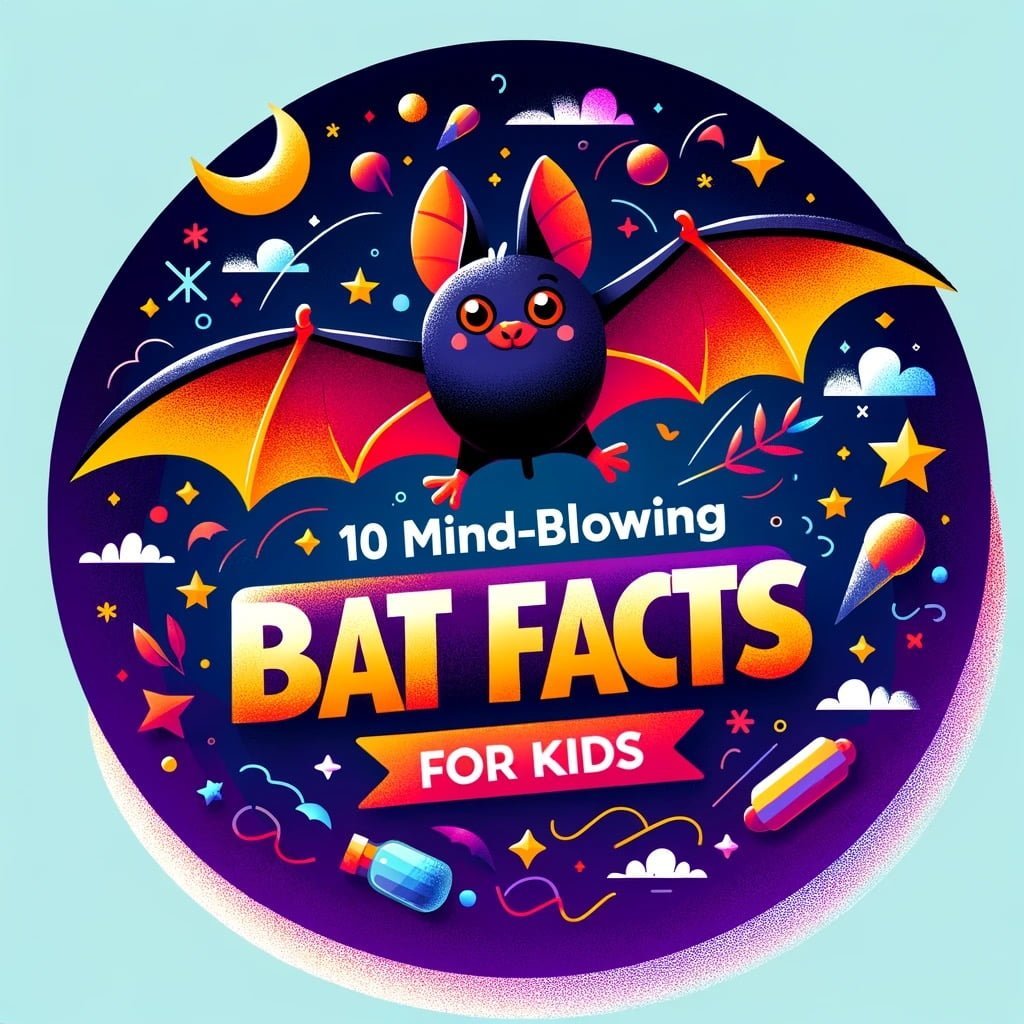Welcome to our fascinating exploration of Reindeer Facts For Kids! In this engaging post, we will delve into the incredible world of these majestic creatures and uncover the amazing adaptations that make them unique. From their color-changing coat to their velvety antlers, excellent swimming abilities, and swift running speeds, reindeer are truly remarkable animals. Join us as we uncover the special feet adaptations, ultraviolet vision, distinct clicking sounds, and the harsh Arctic environments where reindeer thrive. Discover how these herds migrate long distances, eat moss and lichens, and navigate through challenging conditions with ease. Get ready to be amazed by the wonders of reindeer as we uncover the hidden secrets of these remarkable creatures. Let’s embark on this exciting journey of learning and discovery together!
Reindeer Facts For Kids
1. Reindeer Change Their Coat Color
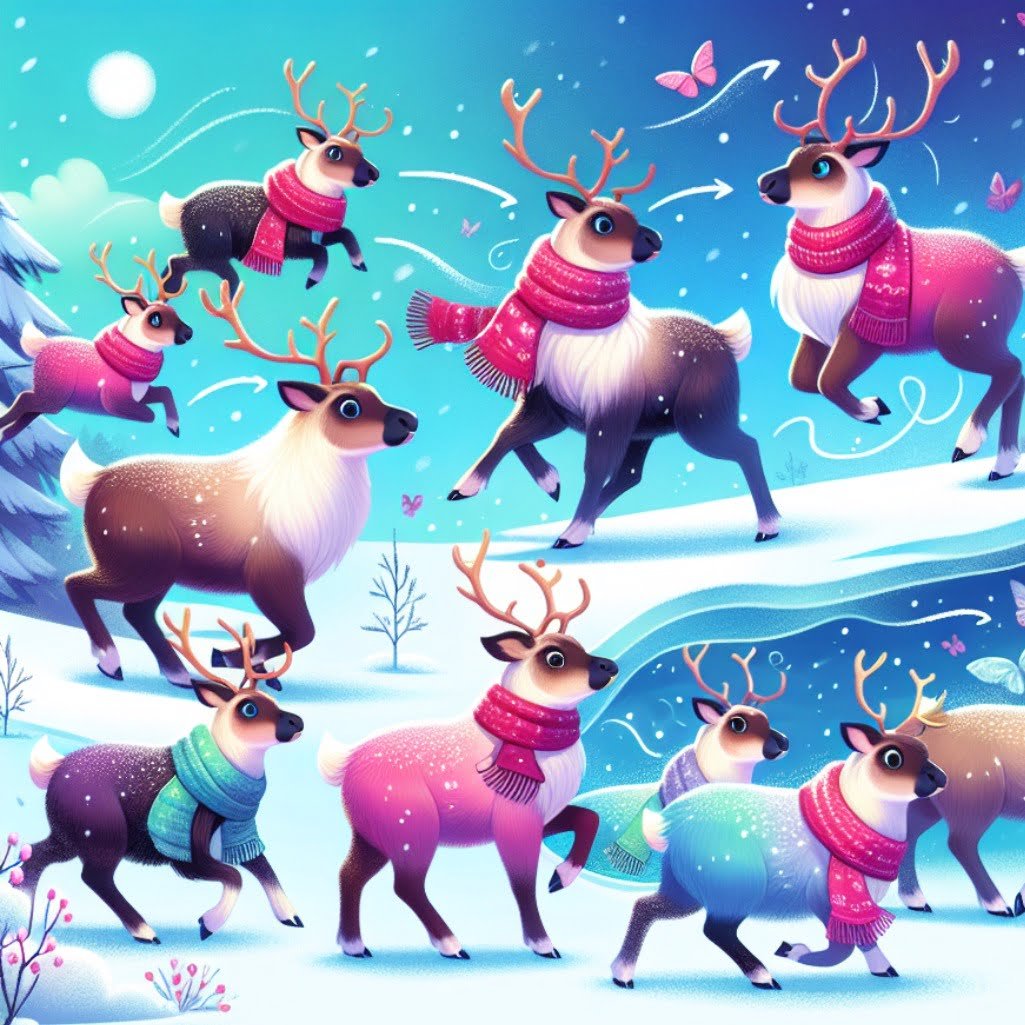
For younger kids: Reindeer change the color of their fur depending on the season.
For older kids: Reindeer have two layers of fur – a hollow outer layer that traps air for insulation and an inner layer that changes color to help them blend in with their environment.
Detailed explanation:Reindeer are fascinating creatures that undergo a unique transformation in their appearance, particularly in their coat color. One interesting Reindeer Fact For Kids is that these majestic animals actually change the color of their coats throughout the year. This change in coat color is not only aesthetically intriguing, but it also serves a practical purpose in helping them adapt to their environment and survive in harsh conditions.
During the winter months, Reindeer grow a thick, white coat that provides them with insulation against the freezing temperatures and allows them to blend in with the snowy landscape, camouflaging them from predators such as wolves and bears. This white coat also helps them to absorb sunlight and stay warm during the long, dark Arctic winters.
As the weather warms up and the snow begins to melt in the spring, Reindeer shed their thick white coat in favor of a shorter, lighter brown coat. This new coat helps them stay cool in the warmer weather and navigate the changing terrain of their Arctic habitat.
This seasonal change in coat color is a remarkable adaptation that showcases the incredible resilience and flexibility of these animals. By changing their coat color to match the changing seasons, Reindeer are able to thrive in the harsh conditions of the Arctic and continue to be a symbol of strength and vitality in the wild. So, next time you see a Reindeer, remember this fascinating Reindeer Fact For Kids and appreciate the amazing ways in which these animals have evolved to survive and thrive in their environment.
Reindeer Facts For Kids
2. Reindeer Have Velvety Antlers
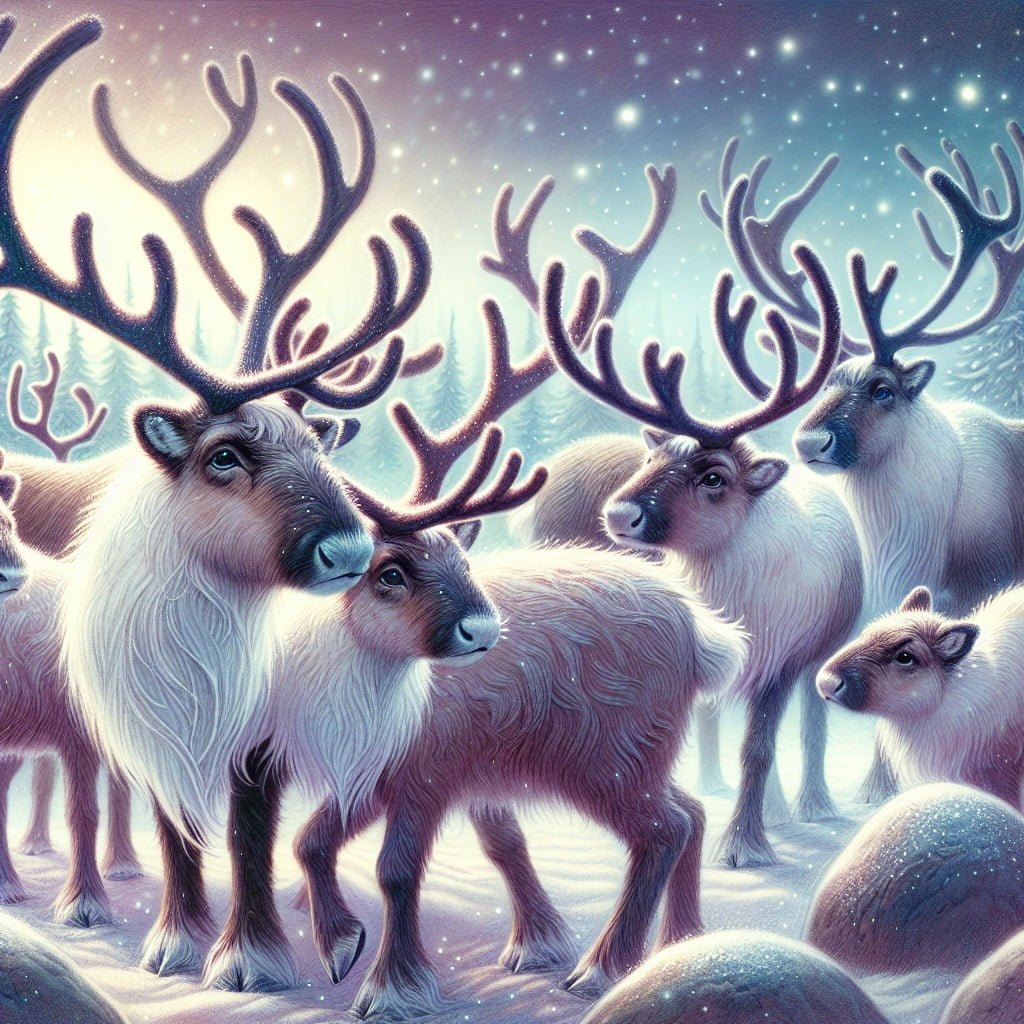
For younger kids: Reindeer have soft, fuzzy antlers that grow back every year.
For older kids: Reindeer antlers are covered in a furry skin called velvet, which supplies blood and nutrients to help the antlers grow, shedding the velvet once the antlers are fully formed.
Detailed explanation:Reindeer are fascinating and unique creatures that are well-adapted to their cold Arctic environments. One interesting fact about reindeer is that they have velvety antlers. These antlers are not only impressive in size, but they also have a soft, velvety covering that sets them apart from other types of antlers found in the animal kingdom.
The velvet covering on reindeer antlers serves a few important purposes. Firstly, it helps to protect the antlers while they are growing. As reindeer are the only species of deer in which both males and females grow antlers, this is a crucial adaptation. The velvet covering also contains a network of blood vessels that deliver vital nutrients and oxygen to the growing antlers, aiding in their development. Once the antlers have reached their full size, the velvet dries up and is eventually rubbed off by the reindeer.
In addition to their impressive antlers, reindeer are also known for their incredible ability to survive in harsh environments. Their thick fur insulates them from the cold, while their hooves are specially adapted to provide traction on slippery surfaces like ice and snow. Reindeer also have a unique nasal structure that helps warm the frigid air they breathe in before it reaches their lungs.
Overall, reindeer are truly remarkable animals with a number of fascinating adaptations that help them thrive in their Arctic habitats. Their velvety antlers are just one example of the many ways in which they are perfectly suited to their environment.
Reindeer Facts For Kids
3. Reindeer are Excellent Swimmers
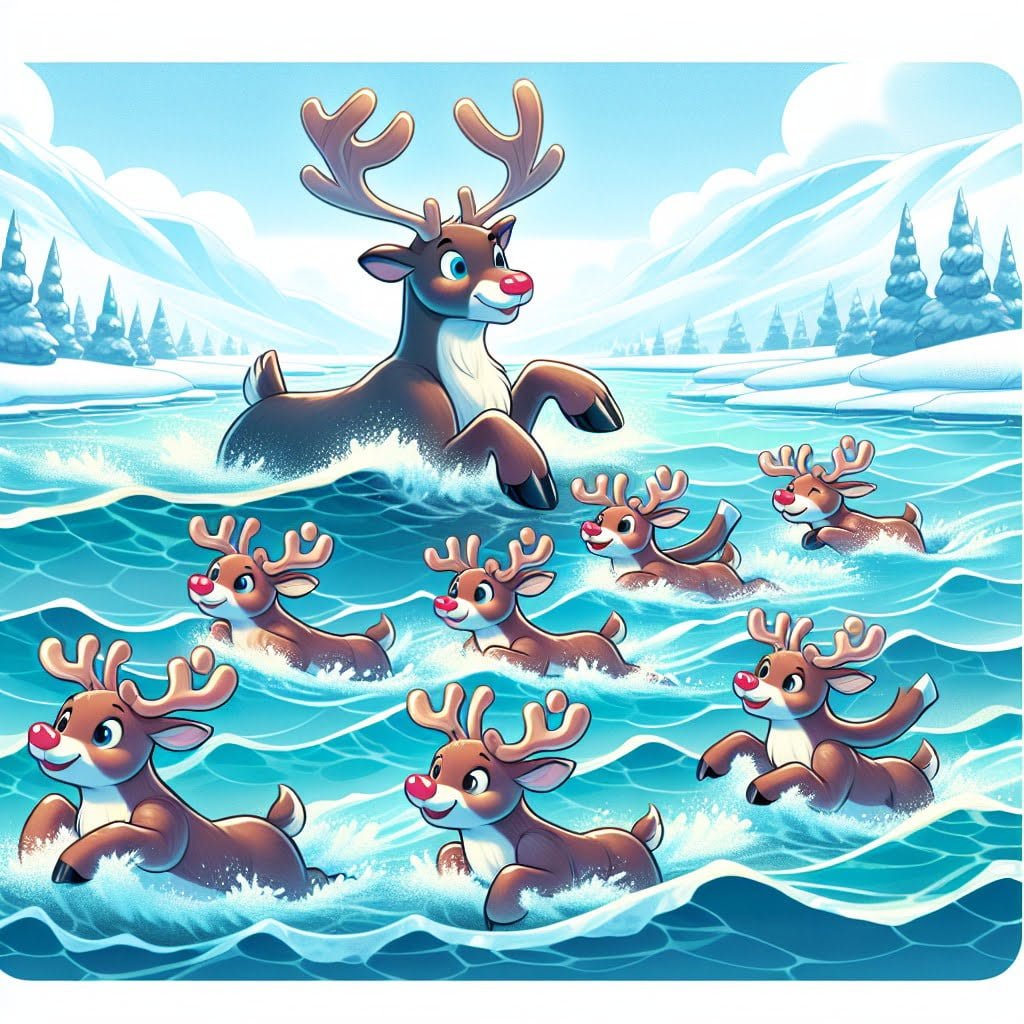
For younger kids: Reindeer are great at swimming and can cross rivers with ease.
For older kids: Despite their large size, reindeer are excellent swimmers and can cover long distances in water to find food or escape predators.
Detailed explanation:Reindeer, also known as caribou in North America, are well-known for their ability to swim long distances. This makes them excellent swimmers, allowing them to navigate across rivers and lakes with ease during their migrations. In fact, reindeer are one of the few deer species that are proficient swimmers.
Their unique adaptations make them well-suited for swimming. Reindeer have hollow hair shafts that provide excellent insulation and buoyancy, making it easier for them to stay afloat in the water. Their cloven hooves also act as natural paddles, propelling them forward as they swim. Additionally, reindeer have a high oxygen-carrying capacity in their blood, which helps them cope with the physical demands of swimming long distances.
One of the most impressive displays of reindeer swimming abilities is during their annual migrations. These migrations can cover hundreds of miles, often requiring reindeer to swim across large bodies of water to reach their destination. Despite the challenges they may face, reindeer are able to overcome these obstacles with their incredible swimming skills.
In conclusion, reindeer are truly exceptional swimmers, showcasing their adaptability and strength in the water. This unique aspect of their behavior adds to the fascinating array of reindeer facts for kids to learn about and appreciate. So, next time your child asks about reindeer, make sure to mention their impressive swimming abilities!
Reindeer Facts For Kids
4. Reindeer Have Special Feet Adaptations
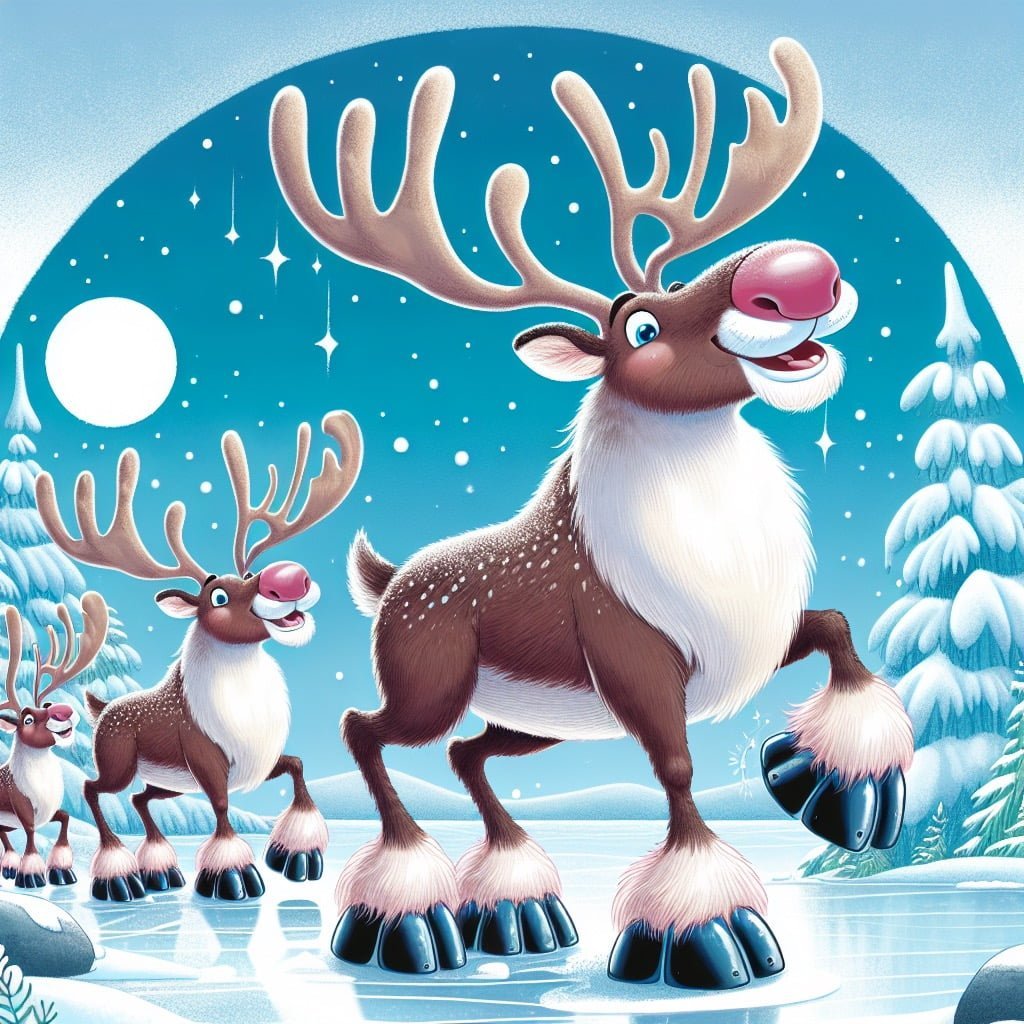
For younger kids: Reindeer have rounded hooves that act like snowshoes in the winter.
For older kids: Reindeer hooves expand in the summer to provide traction on soft ground and shrink in the winter to expose the rim, which helps them dig through the snow for food.
Detailed explanation:Reindeer Facts For Kids: Reindeer are fascinating creatures with special feet adaptations that enable them to thrive in their harsh Arctic environment. These adaptations are crucial for their survival in the cold, snowy terrain where they live.
One important feature of reindeer feet is their large, concave hooves. These hooves act like snowshoes, allowing the reindeer to walk on top of the snow without sinking in. This is especially important during the winter months when the snow is deep, as sinking into the snow would require much more energy for the reindeer to move around. The concave shape of their hooves also provides better grip on icy surfaces, helping them to navigate slippery terrain with ease.
In addition to their unique hooves, reindeer also have specialized foot pads that help them maintain traction on slippery surfaces. These foot pads have a rough, textured surface that grips the ice and snow, preventing the reindeer from slipping or sliding. This adaptation is essential for their mobility in the Arctic, where icy conditions are common.
Overall, the feet adaptations of reindeer are crucial for their survival in their extreme environment. Without their specialized hooves and foot pads, reindeer would struggle to move around efficiently in the snow and ice. These adaptations allow them to thrive in their habitat, finding food and avoiding predators effectively. So, the next time you see a reindeer, take a moment to appreciate their amazing feet adaptations that help them survive in the cold, snowy Arctic.
Reindeer Facts For Kids
5. Reindeer Can Run Up to 50 mph
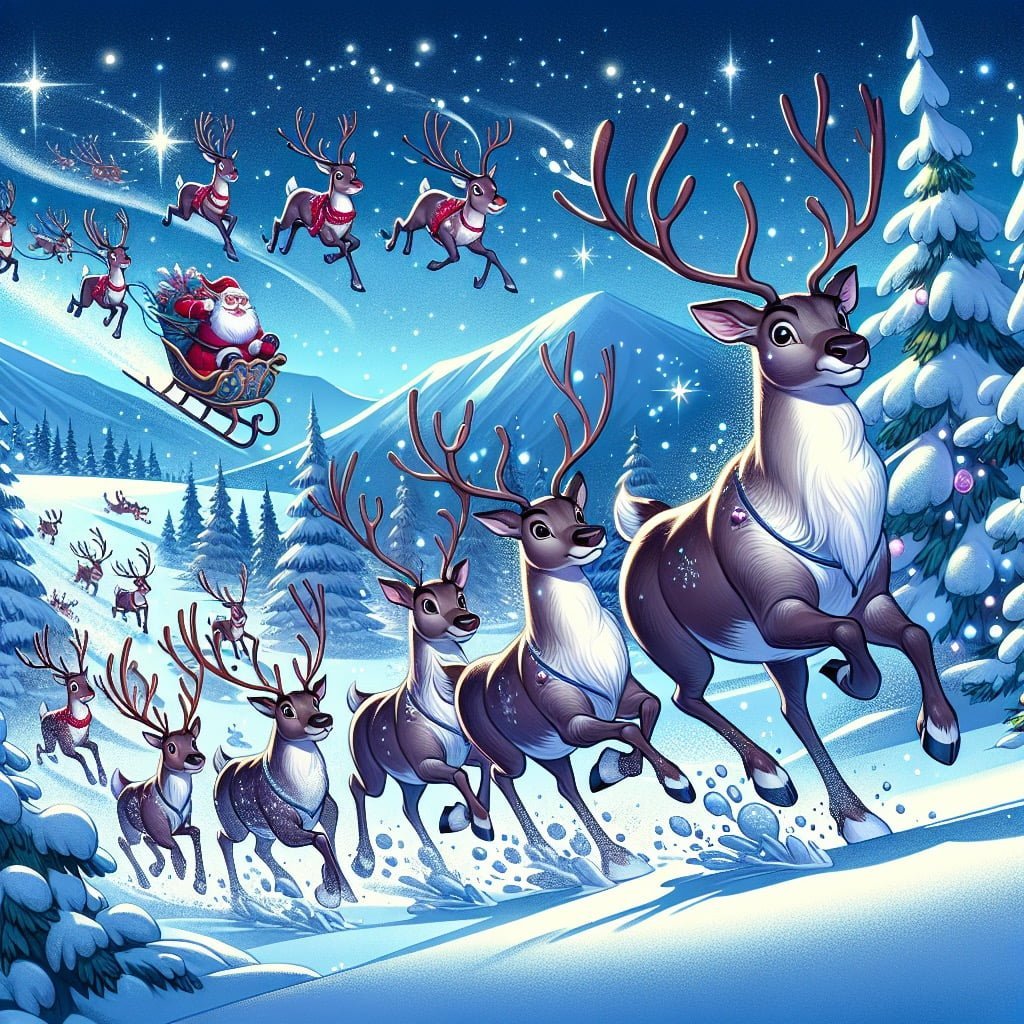
For younger kids: Reindeer are super fast and can run as fast as a car!
For older kids: Reindeer are incredibly swift animals, capable of running at speeds of up to 50 miles per hour to evade predators like wolves and bears.
Detailed explanation:Reindeer Facts For Kids: One fascinating fact about reindeer is that they can reach speeds of up to 50 mph. This impressive speed allows them to outrun predators and cover great distances in their habitats. Reindeer are built for speed with their long legs and powerful muscles, making them one of the fastest land animals in the Arctic.
Reindeer are also known for their endurance, able to maintain a steady pace for long periods of time. This combination of speed and stamina makes them well-equipped to survive in their harsh environments, where food sources may be spread out over large areas.
The ability of reindeer to run at such high speeds is a result of years of evolution in response to their predators and the need to find food in a challenging environment. Their natural agility and speed have helped them avoid dangers and thrive in the Arctic regions where they are found.
In addition to their physical adaptations for speed, reindeer also have keen senses that help them navigate their surroundings. Their large eyes and excellent vision allow them to detect predators from far away, while their acute sense of smell helps them locate food sources even under layers of snow.
Overall, the remarkable speed of reindeer is just one of many adaptations that make them well-suited to their Arctic habitats. By being able to run up to 50 mph, reindeer are able to survive and thrive in some of the harshest environments on Earth.
Reindeer Facts For Kids
6. Reindeer Can See Ultraviolet Light
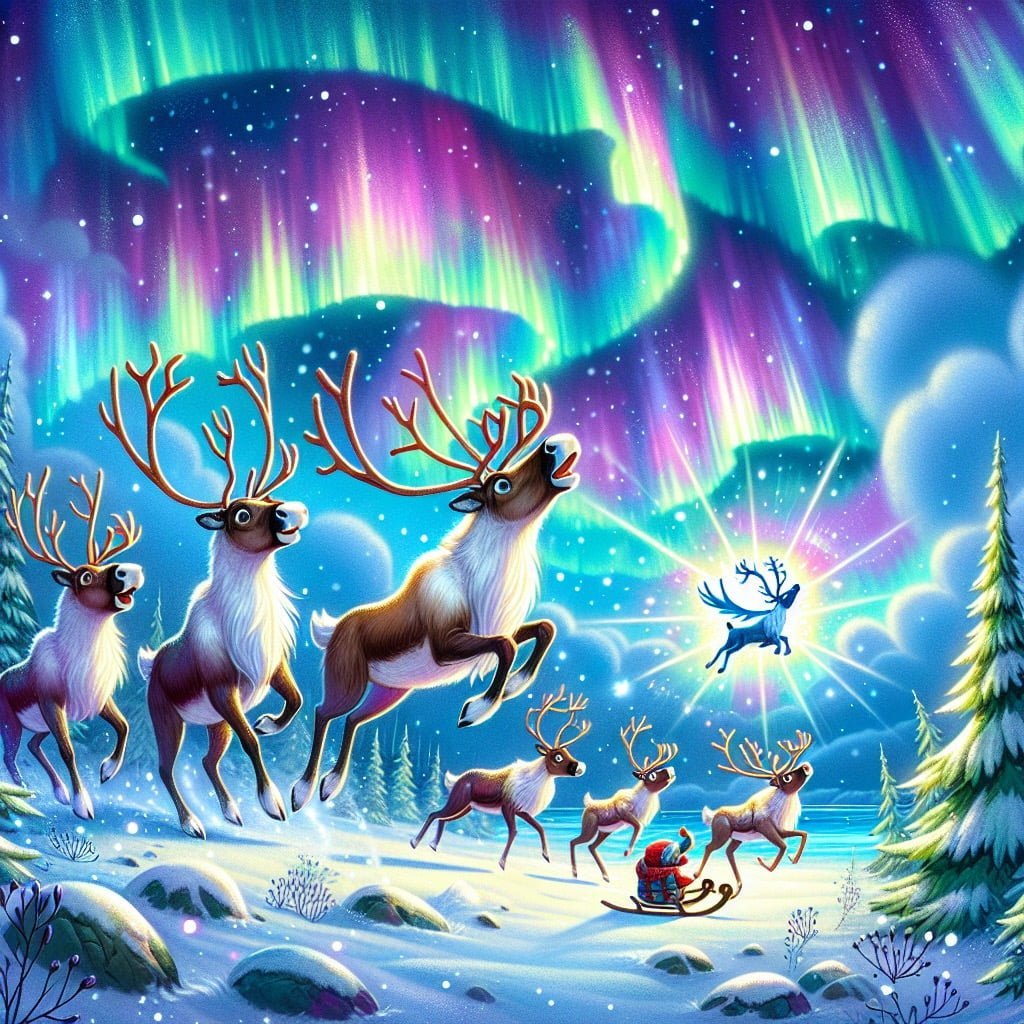
For younger kids: Reindeer can see things we can’t with their special eyes!
For older kids: Reindeer can detect ultraviolet light, which allows them to see lichens and other food sources that are invisible to the human eye, especially in the snow.
Detailed explanation:Reindeer, fascinating creatures known for their association with Christmas and ability to thrive in harsh Arctic environments, possess a unique and remarkable attribute: the ability to see ultraviolet (UV) light. This means that reindeer can perceive a spectrum of light beyond what is visible to the human eye, including UV rays that are typically absorbed by our atmosphere.
This exceptional visual ability serves a critical purpose for reindeer, as it allows them to navigate through the often snow-covered landscapes of the Arctic tundra with greater ease. By being able to see UV light, reindeer can distinguish contrasts and patterns in their environment that are invisible to other animals. For example, during the winter months when the ground is blanketed in white snow, reindeer can utilize their UV vision to locate food sources that may be difficult to see with normal visible light.
Furthermore, this unique trait is advantageous for reindeer in detecting predators, such as wolves or bears, which may blend into their surroundings. By being able to see UV light, reindeer can spot these potential threats more easily and take evasive action to avoid becoming prey.
In conclusion, the ability of reindeer to see ultraviolet light is a fascinating adaptation that plays a crucial role in their survival in the challenging Arctic environment. This extraordinary aspect of their vision allows them to perceive the world in a way that is beyond our human capabilities, showcasing the incredible diversity and complexity of the natural world.
Reindeer Facts For Kids
7. Reindeer Have a Unique Clicking Sound
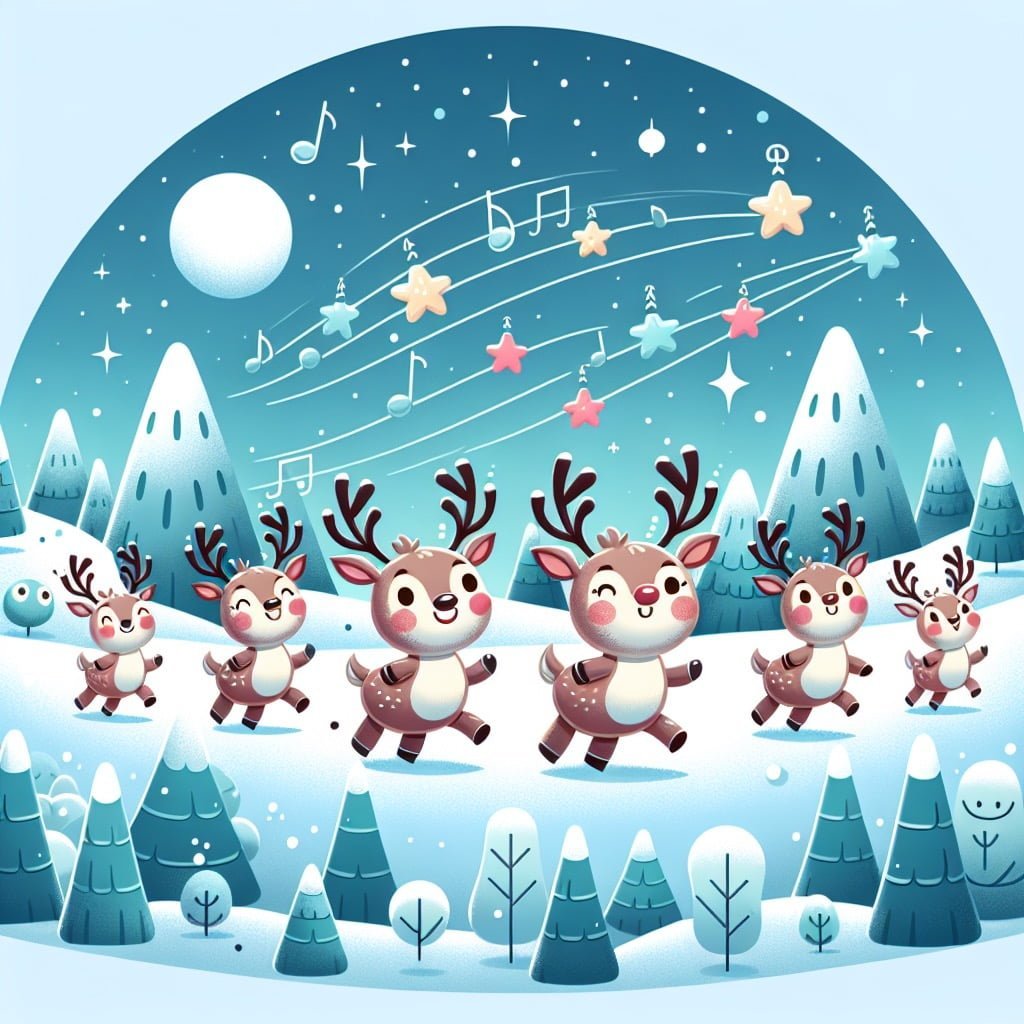
For younger kids: Reindeer make a clicking sound when they walk!
For older kids: Reindeer have a tendon that snaps over a bone in their foot, creating a distinct clicking sound that helps them stay together in a herd during snowy conditions where visibility is low.
Detailed explanation:Reindeer Facts For Kids
One of the most fascinating aspects of reindeer is their unique clicking sound. Reindeer, also known as caribou in North America, have a special adaptation in their knees that produces a clicking noise when they walk or run. This characteristic sound is created by a tendon slipping over a bone in their knees, and it serves as a way for reindeer to stay connected with each other in their vast herds.
The clicking sound of reindeer is not only a means of communication, but it also helps them navigate through the Arctic tundra, especially during harsh winter conditions when visibility can be limited. By listening to the clicking sounds of their herd mates, reindeer can stay together and avoid getting separated in the snow or fog.
Interestingly, the clicking sound of reindeer has also intrigued scientists and researchers who study animal behavior and communication. By recording and analyzing these unique sounds, experts have gained valuable insights into how reindeer interact with each other and navigate their harsh environment.
In conclusion, the clicking sound of reindeer is a fascinating adaptation that plays a crucial role in their communication and survival strategies. This unique feature not only sets reindeer apart from other animals but also showcases the incredible ways in which they have evolved to thrive in their Arctic habitat. So, the next time you hear the clicking sound of reindeer, remember the fascinating science behind this curious phenomenon.
Reindeer Facts For Kids
8. Reindeer Live in the Arctic Circle
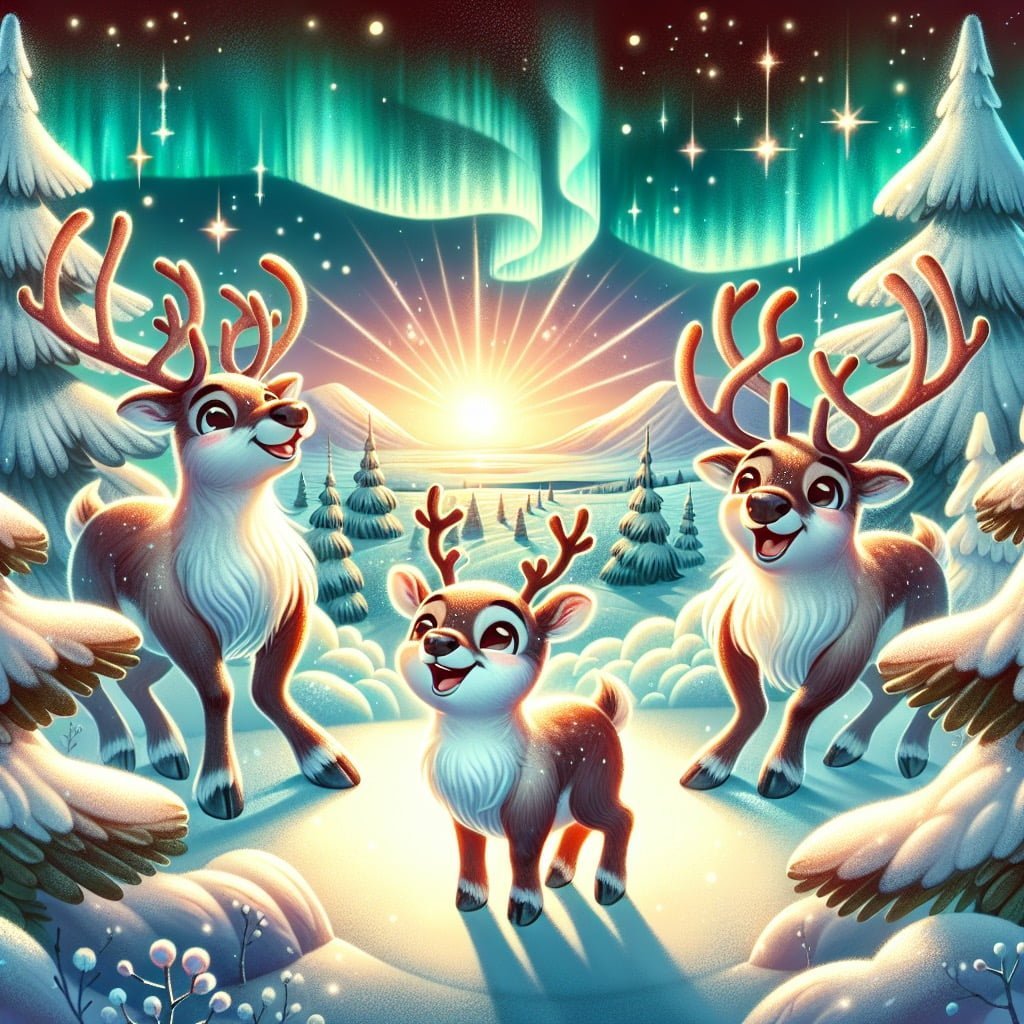
For younger kids: Reindeer live in the very cold Arctic where it snows a lot.
For older kids: Reindeer are well-adapted to living in the harsh conditions of the Arctic Circle, where they use their thick fur and specialized noses to survive in extreme cold temperatures and deep snow.
Detailed explanation:Reindeer Facts For Kids: One interesting fact about reindeer is that they live in the Arctic Circle. This region, known for its cold temperatures and icy landscapes, is the natural habitat of these sturdy animals. Reindeer have adapted to thrive in this harsh environment, with their thick fur coats providing insulation against the cold. They also have specialized hooves that help them walk on the snow and ice without slipping.
Living in the Arctic Circle presents unique challenges for reindeer. They must constantly search for food in the frozen tundra, where vegetation can be scarce. Reindeer are herbivores, feeding on a diet of lichens, mosses, and grasses that they find beneath the snow. During the winter months, they use their powerful sense of smell to locate food hidden beneath the icy surface.
Another important aspect of living in the Arctic Circle is the presence of predators. Reindeer must always be on the lookout for wolves, bears, and other animals that might see them as a potential meal. To protect themselves, reindeer gather in large herds, where they can watch out for each other and defend against any threats.
In addition to their adaptations for surviving in the cold climate, reindeer also play a crucial role in the ecosystems of the Arctic Circle. They help to disperse seeds and nutrients through their droppings, contributing to the growth of plants in the region. Their grazing habits also help to shape the landscape, influencing the distribution of vegetation in the tundra.
Overall, the fact that reindeer live in the Arctic Circle highlights the incredible resilience and resourcefulness of these remarkable animals. Their ability to thrive in such a challenging environment is a testament to their adaptability and evolutionary success.
Reindeer Facts For Kids
9. Reindeer Eat Moss and Lichens
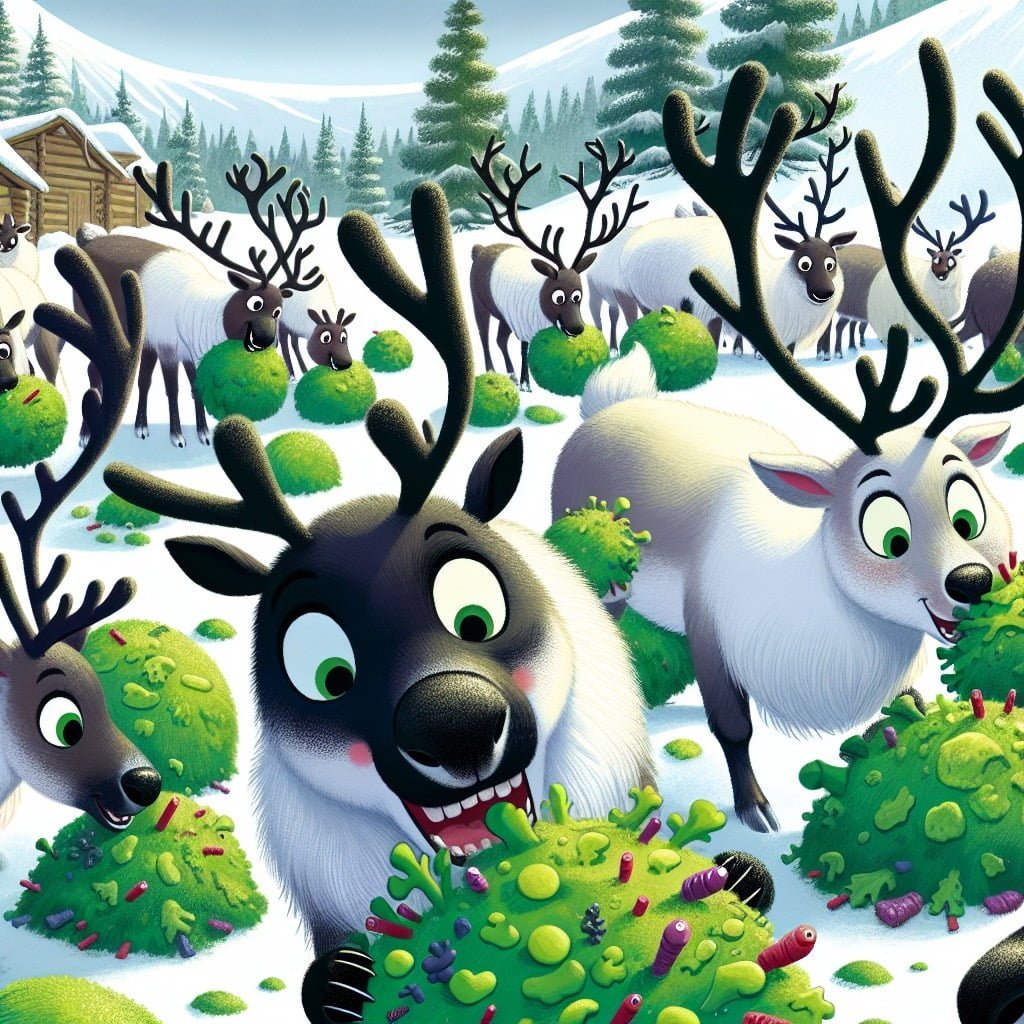
For younger kids: Reindeer love eating moss and lichens that grow in the snow.
For older kids: Reindeer have a specialized diet of moss, lichens, grass, and leaves. They use their hooves to dig through the snow to reach their favorite plants during the winter months.
Detailed explanation:Reindeer Facts For Kids are not only fascinating to learn about, but also provide insight into the unique adaptations of these amazing creatures. One such fact is that reindeer eat moss and lichens as a key part of their diet. This behavior is not only interesting but also essential for their survival in the harsh Arctic environment where they live.
Moss and lichens are abundant in the Arctic tundra, where reindeer are found. These plants are hardy and can survive in the extreme cold temperatures of the region. They provide an important source of nutrition for reindeer, especially during the long winter months when other food sources may be scarce. Reindeer have specialized digestive systems that allow them to break down the cellulose in moss and lichens, extracting the nutrients they need to thrive.
In addition to being a source of food, moss and lichens also provide other benefits to reindeer. They can help regulate the reindeer’s body temperature by providing insulation in the cold Arctic climate. Reindeer can also use moss and lichens as a source of moisture, especially when water sources are frozen.
Overall, the fact that reindeer eat moss and lichens is a testament to their remarkable adaptations to their environment. By consuming these plants, reindeer are able to survive and thrive in one of the harshest environments on Earth. It is truly amazing to see how these animals have evolved to make the most of their surroundings and ensure their continued survival. Reindeer Facts For Kids are not only educational but also offer a glimpse into the fascinating world of these incredible creatures.
Reindeer Facts For Kids
10. Reindeer Herds Can Migrate Long Distances
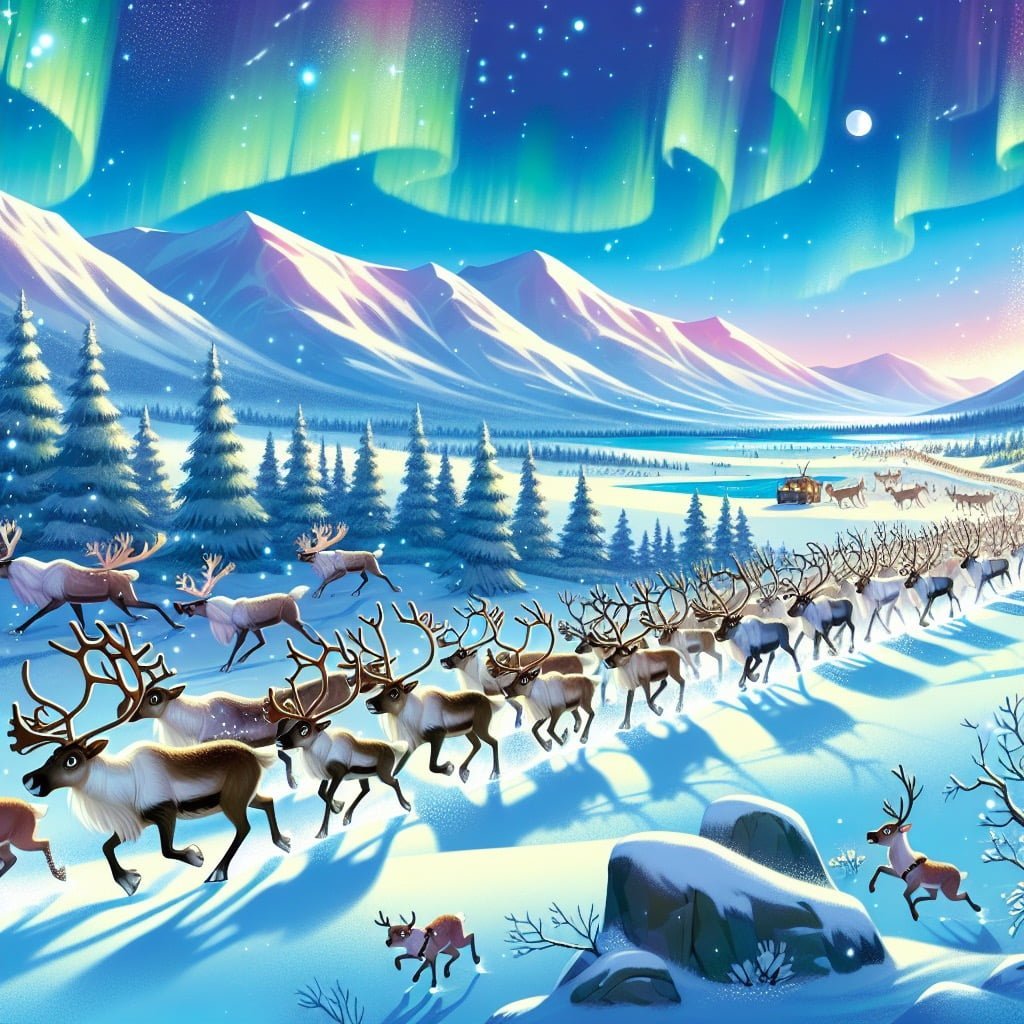
For younger kids: Reindeer families travel very far together during the year.
For older kids: Reindeer herds make incredible migrations, covering thousands of miles annually to find food and favorable breeding grounds as the seasons change, showcasing their impressive endurance and adaptability.
Detailed explanation:Reindeer herds are known for their incredible ability to migrate long distances, making them one of the most fascinating species to study in the animal kingdom. This behavior is crucial for their survival, as it allows them to find food sources that may be scarce in their current location due to changes in season or weather conditions.
One of the most remarkable aspects of reindeer migration is their synchronized movements as a herd. They are able to communicate with each other and follow a lead reindeer, also known as a matriarch, who guides the group to their destination. This social behavior helps ensure that the entire herd stays together and increases their chances of reaching their destination safely.
During migration, reindeer can travel hundreds of miles in search of food, water, and suitable breeding grounds. This journey can take them across various types of terrain, including forests, tundra, and mountains. Despite facing challenges such as harsh weather conditions and predators along the way, reindeer are able to adapt and overcome these obstacles through their collective strength and resilience.
In addition to migration for survival purposes, reindeer herds also play a crucial role in shaping the ecosystems they inhabit. By grazing on vegetation, they help maintain the balance of plant life in their environment, which in turn supports other wildlife species. This interconnected relationship highlights the importance of understanding and protecting reindeer populations for the overall health of their ecosystems.
In conclusion, the ability of reindeer herds to migrate long distances is a testament to their remarkable adaptability, social behavior, and importance in their ecosystems. By studying and appreciating these fascinating creatures, we can gain valuable insights into the complexity and beauty of the natural world. Reindeer Facts For Kids are not only educational but also serve as a reminder of the wonders of nature.
Did you know?
Did you know that reindeer are the only deer species where both males and females grow antlers?
Summary of Reindeer Facts For Kids
If you’re curious about the fascinating world of reindeer, this blog post is a must-read! From their ability to change coat colors with the seasons to their unique clicking sounds and velvety antlers, there’s so much to learn about these remarkable animals. Discover how reindeer are excellent swimmers, have special feet adaptations for winter survival, and can run as fast as 50 miles per hour to escape predators. Did you know that reindeer can see ultraviolet light or that they have a specialized diet of moss and lichens? Find out more about these incredible creatures and their Arctic habitat in this engaging and informative post. Get ready to be amazed by the many interesting reindeer facts for kids!
Sources and additional information for Reindeer Facts For Kids
WikipediaBritannicaSan Diego Zoo KidsThe Smithsonian InstitutionDK Find Out!Australian MuseumWorld Wildlife FundThe Nature ConservancyAnimal PlanetMonterey Bay AquariumPBS NatureSmithsonian’s National Zoo & Conservation Biology InstituteWorld Wildlife FundAnimal Diversity Web (University of Michigan)IUCN Red List of Threatened SpeciesThe Cornell Lab of Ornithology – All About BirdsNational Audubon SocietyEncyclopedia of LifeSeaWorld Parks & EntertainmentAustralian Museum – AnimalsEncyclopedia of Life



